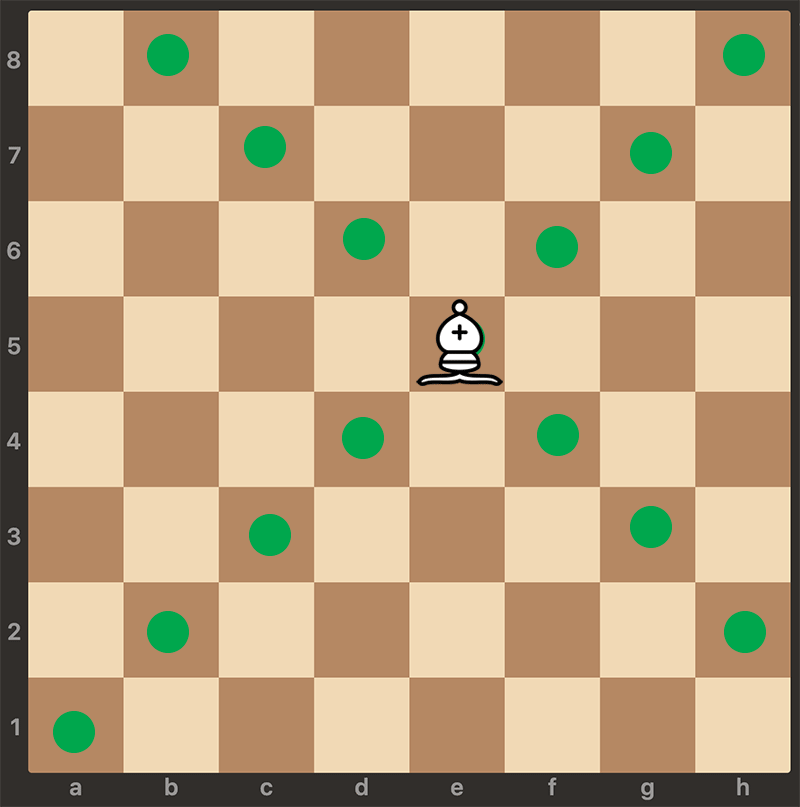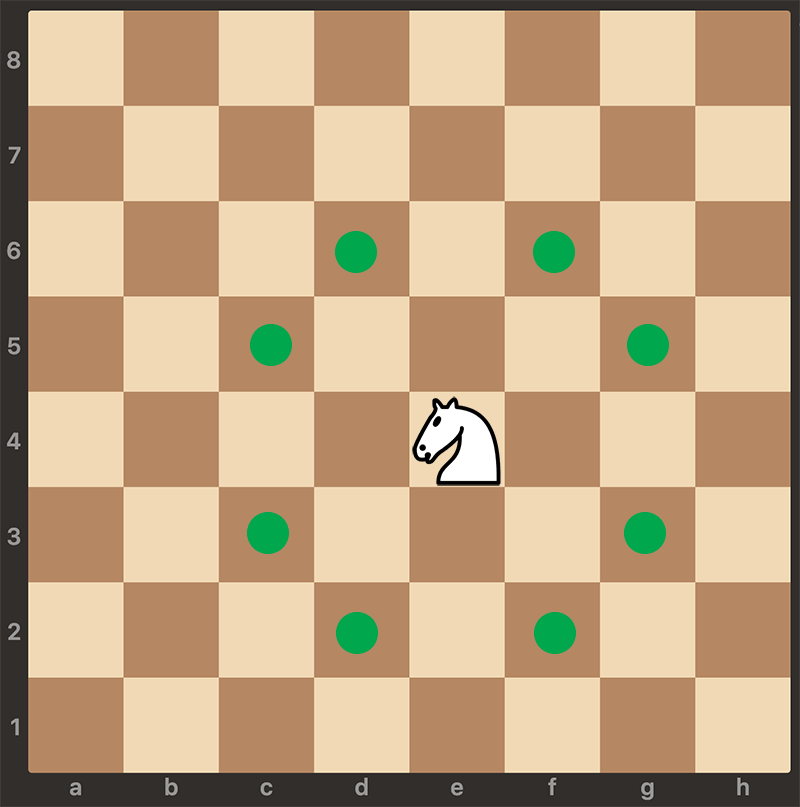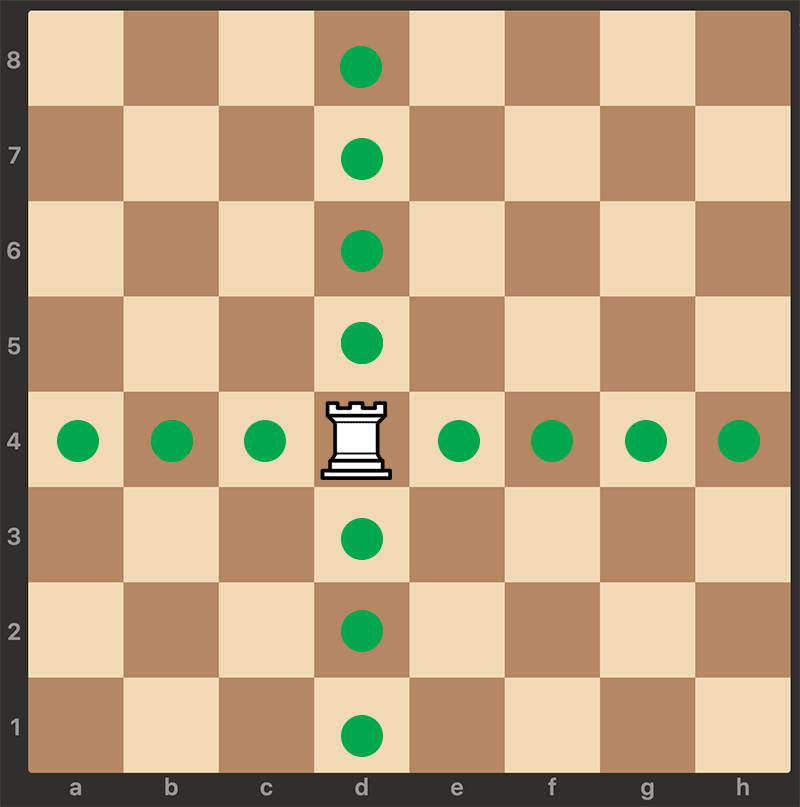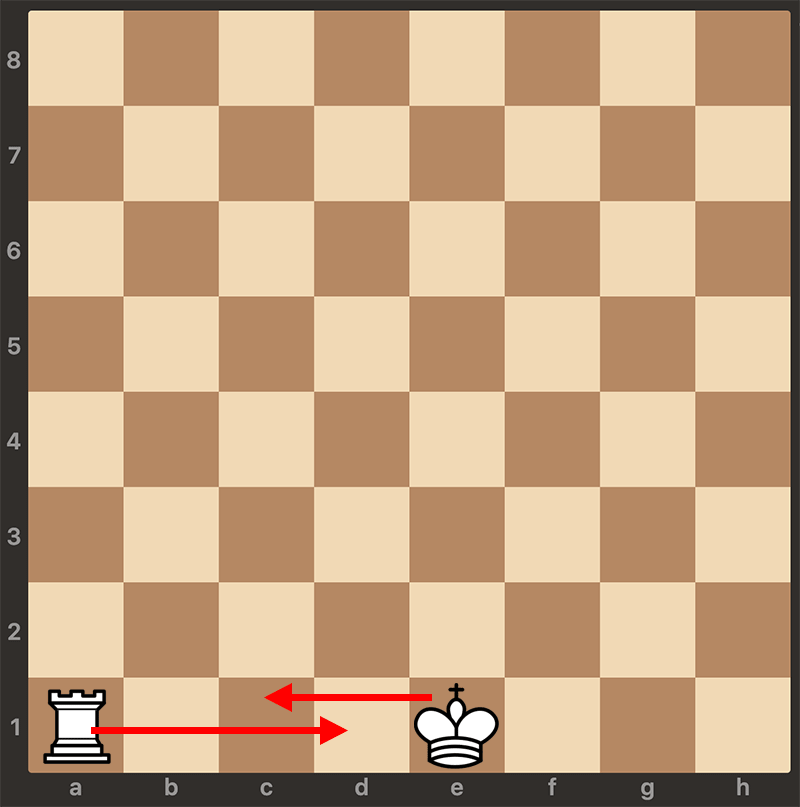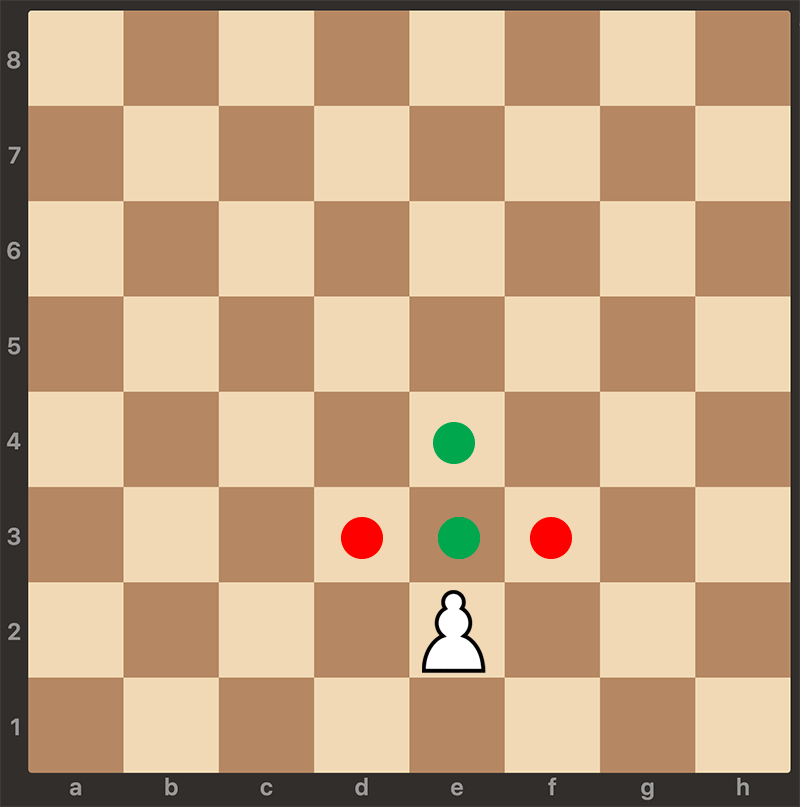In chess, White always goes first. That gives White a small edge to control the game early. But playing Black is not just about waiting. It’s about fighting back, using smart plans, and turning defense into attack.
When you choose your opening as Black, you’re choosing how you want to play. Do you like slow and steady games? Do you enjoy wild, fast attacks? Or do you want to trick your opponent into making mistakes?
This guide shows you 10 of the best openings for Black. We’ll explain not just the moves, but the ideas and history behind each one. These openings will help you feel ready against any opponent — and even help you win with strong counter-attacks.
The Unbalancing Acts: For the Tactical Fighter
These openings are for players who love sharp, tricky games. If you enjoy attacking and don’t mind some risk, these are for you.
1. The Sicilian Defense (1. e4 c5)
This is one of the most popular and powerful openings for Black. By playing 1…c5, Black stops White from taking full control of the center. The game becomes very unbalanced — which means lots of chances to win.
- Main Idea: Fight for the center square d4, use your pawns on the queenside, and launch a strong attack.
- Feel: Fast, sharp, and full of tactics. You need to study it well, but it’s worth it.
- Famous Line: The Najdorf (1.e4 c5 2.Nf3 d6 3.d4 cxd4 4.Nxd4 Nf6 5.Nc3 a6) — This setup is flexible and helps Black prepare for big plans.
2. The Dutch Defense (1. d4 f5)
This is a bold way to answer 1.d4. Black grabs space on the kingside and looks to attack early. It’s risky, but it can surprise your opponent.
- Main Idea: Control the e4 square, attack on the kingside, and create a tough game.
- Feel: Bold, tricky, and full of energy.
- Famous Line: The Leningrad Dutch — Black puts the bishop on g7, mixing ideas from the King’s Indian Defense.
The Hypermodern Style: For the Smart Planner
These openings don’t fight for the center with pawns early. Instead, they use pieces to control the center from a distance and wait for the right moment to strike.
3. The King's Indian Defense (1. d4 Nf6 2. c4 g6)
This opening lets White build a strong center at first. But Black then attacks that center hard with pawns and pieces. It can lead to wild games where both players try to checkmate.
- Main Idea: Let White take the center, then attack it strongly, often with a big kingside push.
- Feel: Dangerous, deep, and exciting.
- History: Used by famous world champions like Tal and Kasparov. This opening feels like a battle of legends!
4. The Nimzo-Indian Defense (1. d4 Nf6 2. c4 e6 3. Nc3 Bb4)
This is one of the smartest openings against 1.d4. By pinning White’s knight, Black stops White from getting a perfect setup. The game can lead to many different types of positions.
- Main Idea: Control the e4 square, mess up White’s pawn structure, and develop quickly.
- Feel: Calm, smart, and full of options.
- Famous Line: The Classical Variation (4.Qc2) — White tries to break the pin and fight back. Leads to long, interesting games.
The Rock-Solid Choices: For the Safe Player
These openings are for players who like strong, safe positions. They slowly build up good plans and avoid early mistakes.
5. The Caro-Kann Defense (1. e4 c6)
This is a safe and solid way to deal with 1.e4. It avoids wild play and helps Black get a strong center with good piece development.
- Main Idea: Build a strong pawn setup, challenge White’s center, and develop safely.
- Feel: Strong, safe, and clear.
- Famous Line: The Advance Variation (1.e4 c6 2.d4 d5 3.e5) — White takes space, and Black tries to break the center later.
6. The Slav Defense (1. d4 d5 2. c4 c6)
This is a reliable way to answer the Queen’s Gambit. The pawn on c6 supports the d5 pawn, and the bishop can come out easily.
- Main Idea: Keep control of the center and develop smoothly.
- Feel: Strong, flexible, and dependable.
7. The Queen’s Gambit Declined (1. d4 d5 2. c4 e6)
One of the oldest and most trusted openings. By not taking White’s c4 pawn, Black keeps a solid setup.
- Main Idea: Keep a strong center and wait for chances to break it open later.
- Feel: Classic, careful, and full of deep ideas.
The Classics: For the All-Round Player
These openings are loved by players of all types. They are simple to learn but full of ideas.
8. The French Defense (1. e4 e6)
Black prepares to play …d5 and fight for the center. The game becomes more closed, and both sides build plans on opposite sides of the board.
- Main Idea: Create a solid pawn chain and fight on the queenside.
- Feel: Strong, slow, and smart.
9. The Scandinavian Defense (1. e4 d5)
A very direct way to meet 1.e4. Black hits the center at once and forces the game to open up.
- Main Idea: Challenge White’s center early, and develop quickly.
- Feel: Fast, open, and bold.
10. The Open Game (1. e4 e5)
The most classical reply to 1.e4. Black plays the same move as White and goes into well-known games like the Ruy Lopez or Italian Game.
- Main Idea: Fight for the center, develop quickly, and follow basic chess rules.
- Feel: Classical, balanced, and full of history.
Find Your Favorite, Play with Confidence
Choosing your opening is like picking your style. The best opening is the one you enjoy and understand.
Try different ones, learn from grandmaster games, and find what suits you best. And remember — your board matters too! Whether you want a tournament-ready Staunton set or a classic wooden board like the old masters used, check out ChessBazaar to find your perfect setup.

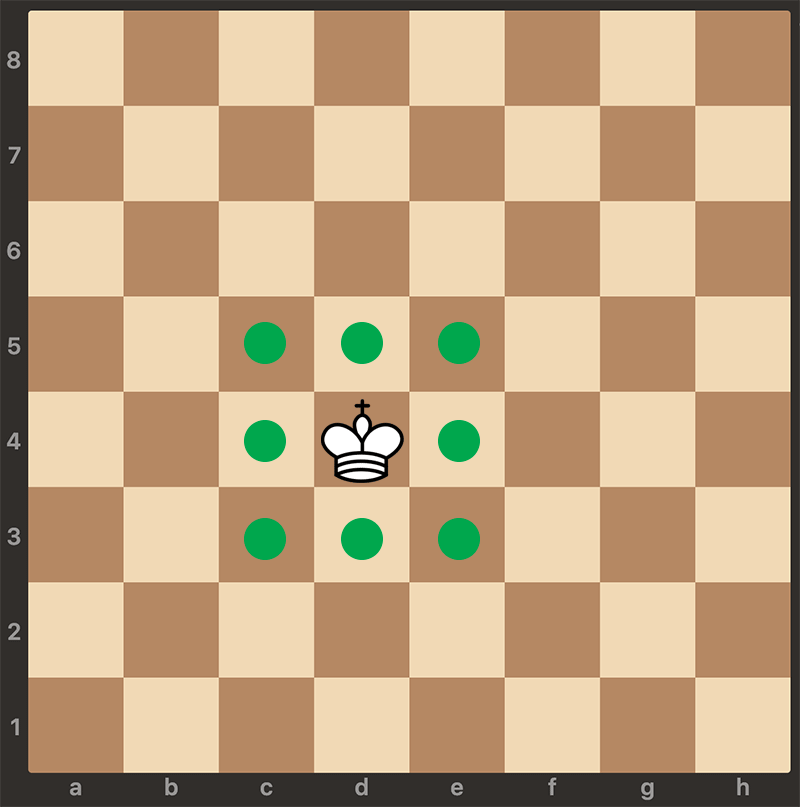
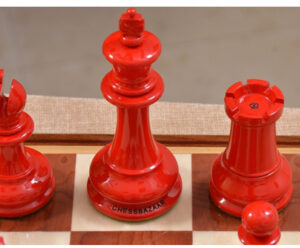 white’s king. With the squares labeled as in algebraic notation, the white king starts on e1 and black on e8. As shown in the diagram below, the king can move only one square in any direction. An interesting point to note about this rule is that two kings can never stand next to each other or capture each other. Though a king may be, and often are, used to help to checkmate the opposing king by guarding squares. The moment of King is generally described by the letter K.
white’s king. With the squares labeled as in algebraic notation, the white king starts on e1 and black on e8. As shown in the diagram below, the king can move only one square in any direction. An interesting point to note about this rule is that two kings can never stand next to each other or capture each other. Though a king may be, and often are, used to help to checkmate the opposing king by guarding squares. The moment of King is generally described by the letter K.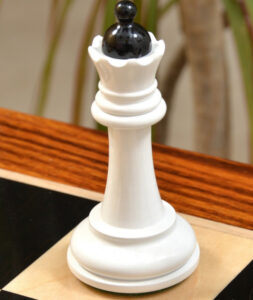 The Queen is, without a doubt, the most powerful piece on the chessboard. She can move with the combination of both bishop and rook in any direction (barring any obstruction). In the diagram below, the green dots indicate the squares the queen may move. She can cover 27 squares. This is a healthy percentage of the board, 42 percent.
The Queen is, without a doubt, the most powerful piece on the chessboard. She can move with the combination of both bishop and rook in any direction (barring any obstruction). In the diagram below, the green dots indicate the squares the queen may move. She can cover 27 squares. This is a healthy percentage of the board, 42 percent.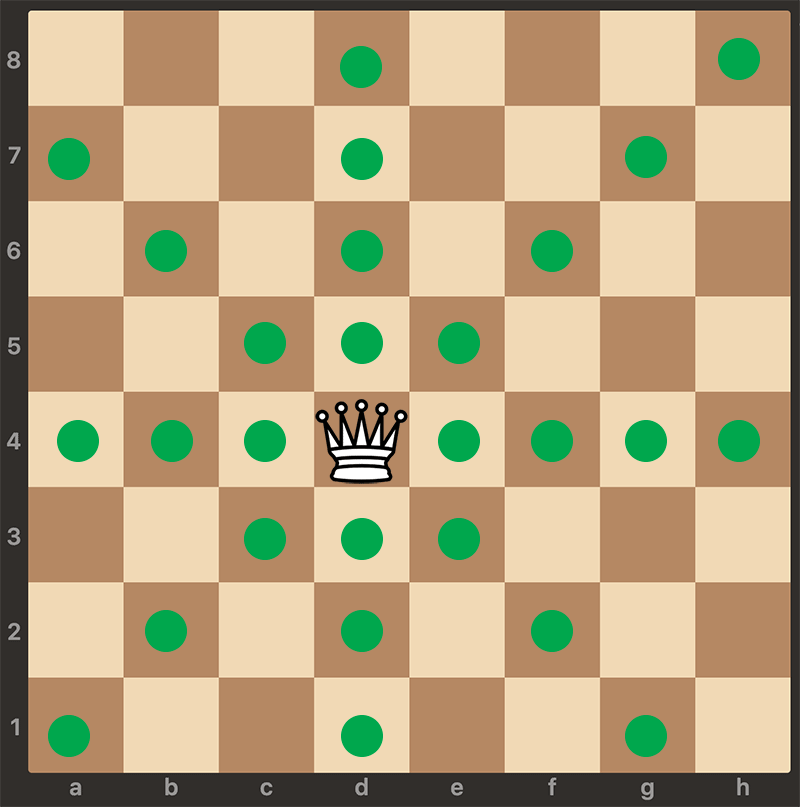
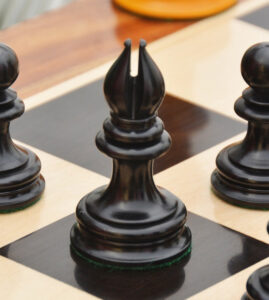 number of squares in a diagonal direction (barring any obstruction). Each player begins the game with two bishops, one on White Square and one on Dark Square. Because they move only diagonally, they always remain on the same colored squares.
number of squares in a diagonal direction (barring any obstruction). Each player begins the game with two bishops, one on White Square and one on Dark Square. Because they move only diagonally, they always remain on the same colored squares.